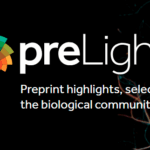By Lilian Nassi-Calò

Adapted photo from the original: m01229.
Open access is projected as the modality that will dominate publication of research results in all areas of knowledge. Associated to open source and open data, this scientific communication model is known to increase the transparency, accessibility and availability of science to all sectors of society, promoting the nations’ technological advance and economic growth. It is an integral part of the advancement of Open Science.
Open Access mandates, either by the Gold Route (journals) or Green Route (preprints and postprints repositories), have been established by funding agencies, institutions and governments around the world, and it is foreseen that in the near future open access will fully replace subscription journals. Even the large multinational publishers whose business models are still based on subscriptions, aware of the irreversibility of the progress of open access, are already working in this direction, through the creation of open access journals, allowing the publication of preprints and postprints or by offering authors the option to make their articles open access in hybrid journals.
Full adoption of open access, however, has not been achieved mainly because researchers are not yet totally convinced that this type of publication will do for their careers the same as subscription journals. A detailed review article recently published in eLife1 analyzes the correlation between open access and citations received, scientific impact, media coverage, and the authors’ career advancement. The results clearly show that the open access publication, as opposing to what many think, is beneficial to researchers.
The paper, which will be summarized in this post, is divided into four main topics: publishing, financing, management and data sharing, and career advancement.
Publication
Although some controlled studies have not been able to demonstrate that open access (OA) articles have different citation patterns as compared to non-OA publications, many and significant studies have shown that OA articles receive, in fact, more citations. A survey2 of more than 1.3 million articles in 10 disciplines during a 12-year period resulted that OA articles have 36-172% more citations than non-OA articles. Forty-six of the 70 articles on citation analysis and open access registered in the SPARC database found a higher number of citations in OA articles. However, 17 articles found no difference and 7 were inconclusive. It is noteworthy that the increase in citations was observed regardless of the open access modality (OA journals, OA option in hybrid journals or OA repositories). Moreover, the effect is maintained regardless of whether the archiving option is the authors’ or due to funder or institutional mandate. OA articles also receive increased media attention (science sections on newspapers and magazines) and social media sharing than non-OA papers, which brings greater visibility to authors. Moreover, a study3 has shown that articles that were news in the media receive more citations.
The use of citation based metrics to appraise publications – and authors – is a widespread, although not recommended, practice. The main index, the Impact Factor (IF), admittedly has many flaws and biases, so that the signatories of the San Francisco Declaration on Research Assessment (DORA) recommend that it should not be used to evaluate research or researchers. However, until the bureaucracy of science meritocracy in stop using it as a performance indicator, the IF is a decisive factor in choosing a journal. Recently, however, the IF of OA indexed journals has been steadily approaching that of subscription journals. In the 2012 edition of the Journal Citation Reports (JCR), over 1,000 journals (13%) having an IF assigned were OA journals. Examples such as PLoS Medicine, Nature Communication and Genome Biology (BMC), all OA, have an IF over 10. It is important to mention that the review article’s authors do not approve the use of IF as a proxy for quality or prestige, but they only wish to demonstrate that authors do not have to choose OA over IF when deciding where to submit their work.
Another OA misconception refers to the peer review process. Many OA journals conduct transparent peer review, for example through open reviews, giving the authors the option to publish them along the article. PeerJ, for example, reports that 40% of peer reviewers sign their reviews and 80% of authors decide to publish them. Studies have shown that open reviews are better in quality than those in the blind or double-blind mode. However, the idea persists among many that OA journals do not perform peer review, or if they do, it is of low quality. An example of this prejudice is the paper by John Bohannon with a questionable methodology published in Science in 20134, in which he reports that 157 of 304 OA journals published poor quality spoof articles. It is important to note that Bohannon’s experiment did not include subscription journals for comparison. It is the view of many scholars that it is a matter of time until the authors – and the science assessment processes – recognize that the openness of peer review only increases its efficiency and quality.
If, despite the exposed arguments, researchers choose to publish only in main stream subscription based journals, there are ways to make contents openly available as preprints or postprints.
Preprints or eprints repositories allow the free of charge publication and access/download to all stakeholders. The non-exhaustive list on the eLife paper mentions at least 15 institutional or thematic repositories such as arXiv, the first one to be created in 1991 that publishes articles on Physics, Mathematics, Computer Science and related fields, and bioRxiv, created in 2013, specialized in Biology and Life Sciences. Preprints do not undergo prepublication peer review, only a brief analysis by the editors. It does not occur to any researcher, however, to publish low-quality articles as preprints, if he does not wish to compromise his credibility among peers. The recent event Accelerating Science and Publication in biology (ASAPbio) has shown the growing interest and support of scientists, funders and publishers regarding preprints. Most subscription journals consider for publication papers deposited as preprints, as shown in the list available on Wikipedia5.
Authors can also make available their manuscripts submitted for publication in traditional journals in open access repositories (postprints). Of the more than 2,200 publishers listed in SHERPA/RoMEO database, 72% allow authors to archive their manuscripts or even the publisher’s final version after an embargo period, typically of 6-12 months. However, there are journals that do not allow the authors to self-archive their articles. In these cases, authors can submit an addendum (there are models available on the SPARC website) allowing them to retain the copyright of a copy of the article deposited in an OA repository.
For many researchers, the collection of article processing charges (APC) is an impediment to publish in OA journals. APC, however, is not a rule in most OA journals, moreover, subscription journals also require page charge. A 2014 study including 1,357 OA journals showed that 71% do not charge APC, which is the same percentage found in other studies with larger numbers of journals. Examples such as eLife, Open Science, and those from the Open Library of Humanities are cited in the review article, which also includes SciELO and Redalyc as APC free collections. In fact, only 20% of SciELO Brazil journals charge APC to cover publication costs, since the vast majority of publishers is linked to scientific societies and non for profit research institutions.
Anyway, APC values charged by OA journals are well below page charge from subscription journals. OA publishers who charge higher rates (e.g. PLoS or Frontiers, above US$ 1,000 per manuscript) consider exempting the fee to authors with financial constraints or from low and middle-income countries. Most funding agencies, however, are increasingly covering OA publication costs of papers resulting from the research they fund.
Funding
Obtaining research grants from funding agencies is crucial for researchers to continue their work, supervise students and career advancement. Obtaining grants is directly linked to the researcher’s performance, mainly publications. Besides public funding, institutional and private foundations, opportunities dedicated specifically to fund – and reward – open research, open data and open software have emerged, especially in recent years. They are traditional funders, such as Wellcome Trust, NIH, and SPARC, which are allocating funds to open research, or new initiatives especially created with this view, as the Shuttleworth Foundation (established in 2007) and Mozilla Science Lab (2013), among others.
It is important to highlight the pioneer role of the São Paulo State Research Foundation (FAPESP) on the development and uninterrupted financing of the SciELO Program, which operates through a network of 15 national collections of open access journals, plus a collection of Public Health journals and another of academic books. Altogether, the network publishes over 1,000 journals. Created in 1998 in order to strengthen and increase the visibility of Brazil scientific communication, the model was extended internationally to 11 other countries in Latin America and the Caribbean, Spain, Portugal and South Africa. National collections are managed and financed in a decentralized manner by national agencies and research support institutions.
The notion that research funded with public resources should be made openly available to society has been consolidating in recent years and, consequently, public funding agencies are not only preferring, but mandating the results to be published in open access. The National Institutes of Health (NIH) have pioneered in 2008 to implement the open access policy, followed by Harvard University in the same year, the National Academy of Sciences of China (2009), and the National Science Foundation (2011). Next, the Centers for Disease Control and Prevention (CDC), the US Defense Department and the space agency NASA, implemented in 2015 open access mandates. That same year, France launched the bill “For a Digital Republic”, and submitted it to public consultation. Funding agencies such as Wellcome Trust, CERN, UNESCO, Bill and Melinda Gates Foundation, and many others have established similar mandates. Many of them still determine that the contents published in OA shall be governed by the Creative Commons attribution license CC-BY, the least restrictive of all. The evolution of the number of open access mandates worldwide, compiled by the authors of the eLife review article, has increased from about 100 in 2005 to almost 800 in 2016.
Data management and sharing
Despite having to comply with the funder’s open access policies, authors may not see immediately the advantages of publishing in open access. One of them refers to the preservation and accessibility of data for future access by the authors themselves and third parties. The preparation of data for sharing demands effort, but it is easier than trying to reconstruct data after a few years, in addition to increasing its transparency and reproducibility.
Data sharing, moreover, leads to higher number of citations of the corresponding article, as noted by several studies cited in eLife. Another study involving NSF and NIH projects found that those with shared data generated, on average, 10 publications, against five of projects that did not share data. Another aspect is that deposited data may be used – and cited – by other authors. However, the real benefit of sharing transcends citations, since it is difficult to estimate the scientific contribution and visibility resulting from sharing, such as increased reproducibility, transparency and the time and resources saved by preventing experiments already performed to be repeated. The initiative Making Data Count, created in 2015, aims to encourage the recognition of data sets as citable scientific output, and assess metrics of scientific impact.
Career advancement
It is known that collaboration between scientists and/or research groups, especially international collaboration, strengthen science and increases the publications’ impact, possibly by increasing the article exposure to a larger scientific community.
The practice of open access publishing, open data and open source software bring researchers an additional benefit regarding authors’ collaboration. The open access publication and data sharing facilitates interaction between researchers and enables associations that potentially leads to intra or interdisciplinary collaboration. This aspect becomes more relevant regarding open source software development, allowing virtually anyone to contribute to create or improve software.
As previously mentioned in this post, the wider adoption of open access publishing is hampered by the current system of evaluation of scientific output and meritocracy. The change in attitude of institutions, development agencies and publishers can completely alter the erroneous concept that open access publishing is inferior in quality and impact as compared to subscription journals.
In recent years, however, the international scientific community, funding agencies and institutions is increasingly recognizing the limitation of journal level metrics (citation based indexes) and giving greater importance to alternative metrics (altmetrics) when assessing research results. In 2013, the San Francisco Declaration on Research Assessment (DORA) was launched by the American Society for Cell Biology, which recommends not using citation based metrics, including the IF, to evaluate research and researchers. As of today, more than 12,000 individuals and over 700 institutions worldwide have become signatories of the Declaration. In 2015, the Higher Education Funding Council for England of the Research Excellence Framework – the system that evaluates higher education institutions in the UK, also rejected the use of the IF and other journal level metrics. The same happened with many American research institutions to evaluate hiring and career advancement. The University of Leiden, in Belgium, went further, requiring that publications considered for promotions, from September 2014 on, ought to be deposited in the institution’s OA repository. In this direction, the Ludwig-Maximilians University in Germany, demands a description of their open science practices from all candidates during the selection process.
Open access publishing, as well as open data and open source software are constantly evolving, and precise definitions and best practice guidelines are being developed, such as the Transparency Principles and Best Practices in Scholarly Publishing by the Directory of Open Access Journals (DOAJ) and the Data FAIRport initiative, regarding open data. Openness may be exerted at different levels, and requires that all are at the same page, or that they participate at the transition with the same celerity. Discussions on this issue are frequent and ubiquitous. When researchers feel comfortable and experience its benefits, it will produce a cultural change that will lead to increasingly adopt open practices, for the benefit of all.
Notes
1. MCKIERNAN, E. C., et al. How open science helps researchers succeed. eLife. 2016, 10.7554/eLife.16800. DOI: 10.7554/eLife.16800.
2. HAJJEM, C., HARNAD, S. and GINGRAS, Y. Ten-Year Cross-Disciplinary Comparison of the Growth of Open Access and How it Increases Research Citation Impact. IEEE Data Engineering Bulletin. 2005, vol. 28, nº 4, pp. 39-47.
3. KIERNAN, V. Diffusion of News about Research. Science Communication. 2003, vol. 25 nº 1, pp. 3-13. DOI: 10.1177/1075547003255297.
4. BOHANNON, J. Who’s Afraid of Peer Review? Science. 2013, vol. 342, nº 6154, pp. 60-65. DOI: http://dx..org/10.1126/science.342.6154.60.
5. List of academic journals by preprint policy. Wikipedia. [viewed 11 July 2016] Available from: https://en.wikipedia.org/wiki/List_of_academic_journals_by_preprint_policy
References
BOHANNON, J. Who’s Afraid of Peer Review? Science. 2013, vol. 342, nº 6154, pp. 60-65. DOI: http://dx..org/10.1126/science.342.6154.60.
HAJJEM, C., HARNAD, S. and GINGRAS, Y. Ten-Year Cross-Disciplinary Comparison of the Growth of Open Access and How it Increases Research Citation Impact. IEEE Data Engineering Bulletin. 2005, vol. 28, nº 4, pp. 39-47.
KIERNAN, V. Diffusion of News about Research. Science Communication. 2003, vol. 25 nº 1, pp. 3-13. DOI: 10.1177/1075547003255297.
LARIVIERE, V, et al. A simple proposal for the publication of journal citation distributions. bioRxiv. 2016. DOI: http://dx..org/10.1101/062109. No prelo.
List of academic journals by preprint policy. Wikipedia. [viewed 11 July 2016] Available from: https://en.wikipedia.org/wiki/List_of_academic_journals_by_preprint_policy
MCKIERNAN, E. C., et al. How open science helps researchers succeed. eLife. 2016, 10.7554/eLife.16800. DOI: 10.7554/eLife.16800.
NASSI-CALÒ, L. Controversial Article in The Journal “Science” exposes the weaknesses of Peer-Review in a set of Open Access Journals. SciELO in Perspective. [viewed 15 May 2016]. Available from: http://blog.scielo.org/en/2013/11/05/controversial-article-in-the-journal-science-exposes-the-weaknesses-of-peer-review-in-a-set-of-open-access-journals/
NASSI-CALÒ, L. Declaration recommends eliminate the use of Impact factor for research evaluation. SciELO in Perspective. [viewed 10 July 2016]. Available from: http://blog.scielo.org/en/2013/07/16/declaration-recommends-eliminate-the-use-of-impact-factor-for-research-evaluation/
NASSI-CALÒ, L. Project Making Data Count encourages sharing of research data. SciELO in Perspective. [viewed 11 July 2016]. Available from: http://blog.scielo.org/en/2015/10/01/project-making-data-count-encourages-sharing-of-research-data/
Sustainability Science in a Global Landscape. Elsevier. 2015. Available from: http://www.elsevier.com/research-intelligence/resource-library/sustainability-2015
External links
arXiv – <http://arxiv.org>
bioRxiv – <http://biorxiv.org>
DataFAIRport – <http://www.datafairport.org/>
DOAJ Principles of Transparency and Best Practice in Scholarly Publishing – <http://doaj.org/bestpractice>
FAPESP – <http://www.fapesp.br/>
Mozilla Science Lab – <http://science.mozilla.org/>
Scholarly Publishing and Academic Resources Coalition, SPARC – <http://sparcopen.org/>
Shuttleworth Foundation – <http://shuttleworthfoundation.org/>
 About Lilian Nassi-Calò
About Lilian Nassi-Calò
Lilian Nassi-Calò studied chemistry at Instituto de Química – USP, holds a doctorate in Biochemistry by the same institution and a post-doctorate as an Alexander von Humboldt fellow in Wuerzburg, Germany. After her studies, she was a professor and researcher at IQ-USP. She also worked as an industrial chemist and presently she is Coordinator of Scientific Communication at BIREME/PAHO/WHO and a collaborator of SciELO.
Translated from the original in portuguese by Lilian Nassi-Calò.
Como citar este post [ISO 690/2010]:








![Researchers engaging with policy should take into account policymakers’ varied perceptions of evidence [Originally published in the LSE Impact blog in January/2023] Illustration of a board, with wires connecting the elements.](https://blog.scielo.org/en/wp-content/uploads/sites/2/2023/01/Evidence-Perceptions-LSE-Impact_thumb.jpg)








Read the comment in Spanish, By Javier Santovenia:
http://blog.scielo.org/es/2016/07/20/como-el-acceso-abierto-puede-impulsar-la-carrera-de-los-investigadores/#comment-39503
Pingback: Can Open Access benefit your Career? – Access 2 Perspectives